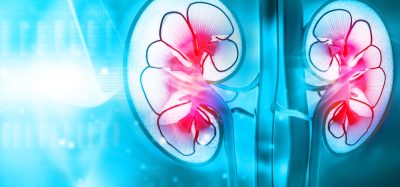Tracking changes in circulating tumour cells shows promise for cancer screening
Posted: 19 March 2018 | Drug Target Review | 1 comment
Researchers in the United States have developed improved methods for capturing circulating tumour cells (CTCs) on clinical samples, with a view to assessing treatment for cancer patients and screening for the disease.
Circulating tumour cells (CTCs) circulate throughout the body in blood vessels and have long been feared as harbingers of metastasising cancer, despite most free-floating cancer cells not going on to establish a new tumour.
However, there is potential benefit to accurately counting these cast-off cells, as they could provide an additional way to track treatment or screen for the disease.
New research by University of Wisconsin-Madison Professor of Pharmacy Seungpyo Hong and his collaborators builds on several years of work in isolating these CTCs, by demonstrating improved methods for their capture on clinical samples for the first time. By forcing cancer cells to slow down and developing stronger molecular traps specific to CTCs, researchers were able to identify large numbers of the cells in cancer patients undergoing radiation therapy.
Biomarkers aren’t just supporting drug discovery – they’re driving it
FREE market report
From smarter trials to faster insights, this report unpacks the science, strategy and real-world impact behind the next generation of precision therapies.
What you’ll unlock:
- How biomarkers are guiding dose selection and early efficacy decisions in complex trials
- Why multi-omics, liquid biopsy and digital tools are redefining the discovery process
- What makes lab data regulatory-ready and why alignment matters from day one
Explore how biomarkers are shaping early drug development
Access the full report – it’s free!
The number of CTCs dropped during therapy and subsequently rebounded in those patients that ended up requiring additional treatment – suggesting that this technology could supplement other techniques for tracking the progress of treatment.
Hong and his collaborator Andrew Wang of the University of North Carolina School of Medicine started the company Capio Biosciences in 2015 to commercialise the technology, which they term CapioCyte.
In addition to the Hong and Wang groups, collaborators from the University of Illinois at Chicago, Duke University and South Korea’s Yonsei University contributed to the work, which was funded in part by the National Institutes of Health and the National Science Foundation.
CTCs: the proverbial needle-in-a-haystack
Scientists have long recognised CTCs as potentially useful metrics for tracking a patient’s disease, but the cells are the proverbial needle-in-a-haystack, drowned out by billions of ordinary red blood cells and other cells found in the blood. Developing ways to specifically concentrate and trap CTCs has been technically challenging, with existing technologies only identifying a handful of cells from certain patients.
Hong‘s team was inspired by the behaviour of CTCs in the blood, as they attach themselves to blood vessel walls and begin tumbling along looking for suitable places to invade. This behaviour sets them apart from the oxygen-carrying cells floating by and is mimicked in the technology they developed, which uses an array of sticky proteins that force the CTCs to begin rolling, and slows them down.
The cells are then trapped using a series of three cancer-specific antibodies – proteins that tightly bind to the CTCs. To strengthen the connection, the researchers developed a nanoscale structure shaped a bit like a tree, with each branch tipped with an antibody. As a cancer cell passes nearby, many individual branches can latch on, increasing the strength of the attachment.
The cell rolling and multi-tipped branches helped the researchers capture an average of 200 CTCs from each millilitre of a patient’s blood – many times the number of cells captured with previous technology. They identified cancer cells in each of 24 patients undergoing treatment for head-and-neck, prostate, rectal or cervical cancer that enrolled in the study.
Commenting on the value of the technology, despite its imprecision, Hong said: “The absolute numbers of CTCs don’t represent too much because there’s too much variation individually, but the more important thing we found was the trend – how the CTC numbers change over time upon treatment. So, for example, we’ve shown that the CTCs go down when the patients are responding really well to the radiotherapy”.
Although the number of cells did not correlate with the stage, and thus severity, of the cancer, the reduction in cells was correlated with successful radiation therapy. In two of the three patients that had recurring or persistent disease, CTC numbers came back up.
“Our data suggest that we have a good chance of making CTCs a predictive biomarker or biomarker for surveillance for at least a few cancers, and that’s always exciting,” says Wang.
“What makes us excited in particular is we can see the direct impact,” says Hong. “As a researcher, if you develop a new technology and it can directly help people, that’s going to be the most rewarding experience – it’s really exciting.”
The study was published in the journal Clinical Cancer Research.
Related topics
Biomarkers, Disease Research, Oncology
Related conditions
Cancer









Excellent article! We are linking to this particularly great article on our website. Keep up the good writing.